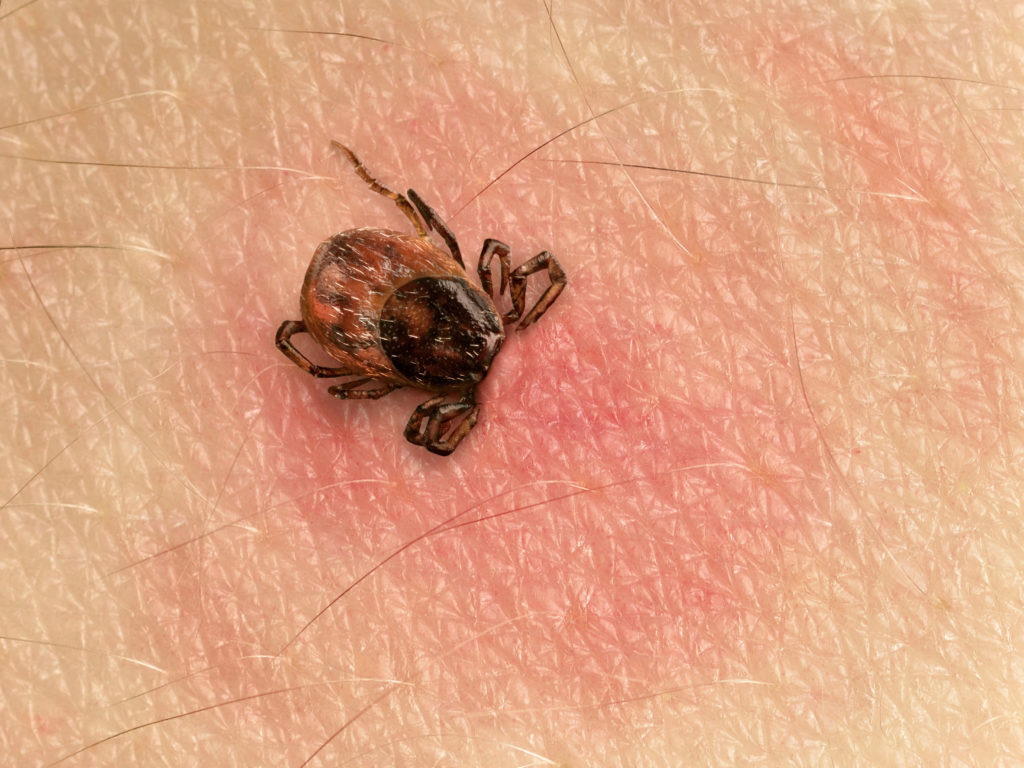Germany: New giant ticks and Lyme disease infections – how to protect yourself effectively against tick bites
Tropical ticks to settle in Germany
They are up to three times as big as their European cousins, have a striking curled legs, and pursue their victims over several 100 meters. The speech is a tick from the newly immigrated Hyalomma -. In the year 2018 Professor Dr. Ute Mackenstedt reported by the University of Hohenheim, the first finds of the tropical tick species in Germany. How dangerous are the new residents?
“At home, the Hyalomma tick is regarded as a Vector of several pathogens,” says the Professor in a communication of the University of Hohenheim. The excitation of the so-called Crimean-Congo Hemorrhagic fever, the Arabic Hemorrhagic fever and tick typhus. So far, however, there were still no cases of these diseases in Germany. However, this could change soon, as “climate change, it seems to allow the Hyalomma tick, to put permanently in Germany,” the evaluation of the experts.
The Crimean-Congo fever, caused recently by several cases in Turkey but also in Spain for attention. Is triggered the disease by a viral pathogen that belongs to the Arboviruses and hemorrhagic fever caused. It is also so important, because there is still no vaccine. However, the timely treatment with an anti-viral agent can prevent the fatal outcome of the disease.

How big is the Lyme disease danger in Germany and Switzerland?
A currently realistic danger, however, is the Lyme disease. The disease in Europe is by far the most common tick-borne disease. Ticks, the Borrelia bacteria, are found in all Parts of Germany. Regionally, the Incidence may vary with the pathogen, however, is very strong. In recent years the mild climate create favorable conditions for ticks, has created Population. But what is the risk of a tick bite by Borrelia to infect and how you can protect yourself best in front of a stitch? Experts from the Robert Koch Institute (RKI) to clarify.
According to the data of RKI, the exact incidence of Lyme disease in Germany is currently not known. From studies leave, however, to infer that 2.6 to 5.6 percent of people in Germany and Switzerland antibodies against Borrelia form, after you have been bitten by a tick. From doctor’s bills show that a total of 0.3 to 1.4 percent of people with tick-bites, clinical disease is manifested. In other words: Depending on the Region, each 70 so average. of up to 300. Tick bite to Lyme disease. According to the RKI estimates of around 214.000 people in Germany are currently at a Lyme disease sick.
Lyme disease is widespread and serious
In a recent RKI-guide, the experts stress that it is the Lyme disease to a common disease, seriously. From six degrees the outside temperature of the shield tick (Ixodes ricinus) is active. Most of the disease cases, however, occur from June to August. According to RKI, children and the elderly are particularly at risk. In these age groups, most often an antibody, it was demonstrated prevalence.
When is a tick bite dangerous?
After a tick has bitten, it starts with the sucking action. The tick saliva and can thus be used as Borrelia bacteria in the host. However, it may take several hours before the Borrelia to reach the host. Therefore, it is advantageous to remove the tick as soon as possible.
What are the symptoms for a disease?
“Lyme disease is to fight, for various reasons, difficult and a challenge for public health protection,” writes the RKI. This was partly due to the fact that there is no typical course of the disease. Lyme disease can Express itself through a large number of complaints or a long time, completely symptom-free. A common identifying feature is the so-called wall redness (Erythema migrans) that appears after several days to weeks of the tick bite. A red Ring forms around the center of the stitch, then moves slowly to the outside.
General complaints that often occur in connection with Lyme disease are fever, muscle pain, fatigue, and headache.
So you protect yourself best in front of a tick bite
There is no vaccine against Lyme disease and because of the variety of complaint image, the disease is difficult to diagnose. The best protection is, therefore, not to be stung. The RKI recommends is free-to-country stays, with contact to the ground near the plants, such as grasses and shrubs, long pants, long-sleeved shirts and footwear. If as much as possible of the body surface is covered, reduce the risk of a stitch dramatically. In addition, certain repellents on clothes and skin to keep the ticks to a certain extent. Effective means of with the content here, materials, Icaridin or diethyl toluamide (DEET) is proved. After a stay in the Green the body should be checked carefully for ticks. This also applies to Pets, as these are recorded ticks can give to their owners.
What to do if you’ve been bitten?
Because only after a few hours of the Lyme disease pathogen transfer is the fastest possible removal of the tick with as little as possible Manipulation of great importance. This is achieved, for example, with a pair of tweezers, as near as attached to the surface of the skin. Then you pull the tick slowly and straight out of the skin. Also tick cards and tick-loops can be used for the removal of the pests. Subsequently, the puncture site is disinfected. If there is no Instrument for the removal is available, it should be removed the tick, according to the RKI nevertheless, in order to prevent the Transmission of pathogens. For this purpose, for example, the finger nails can be used. (vb)


